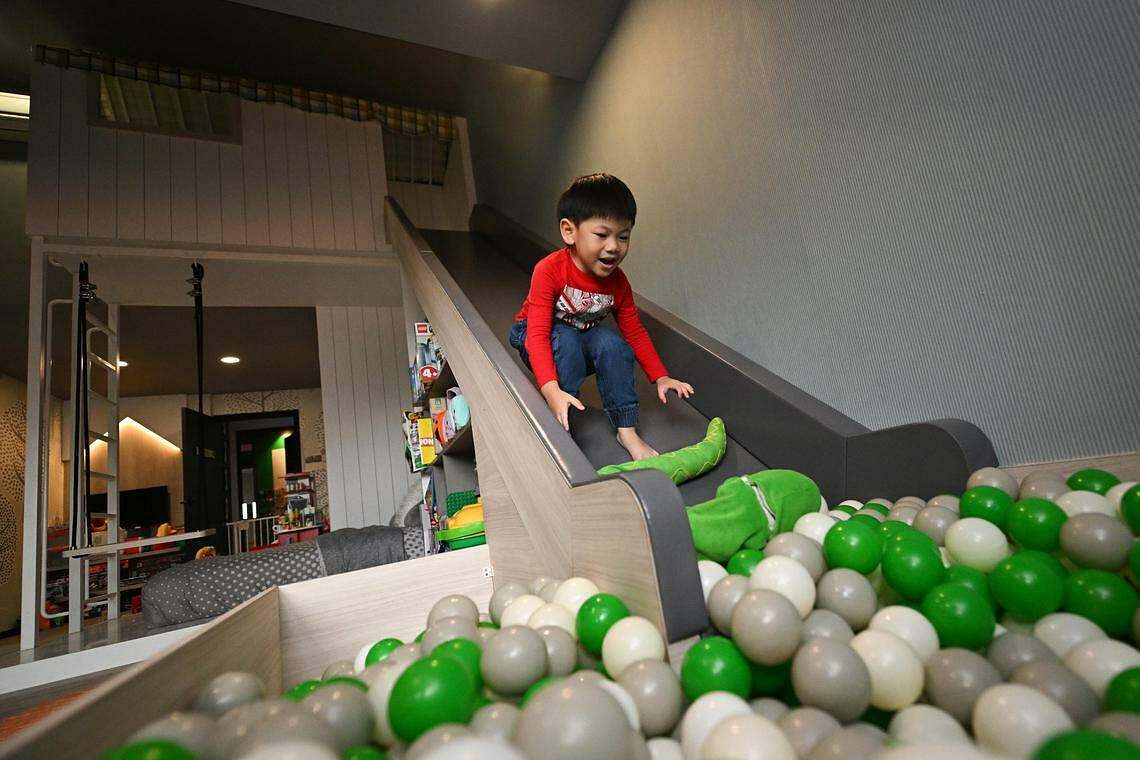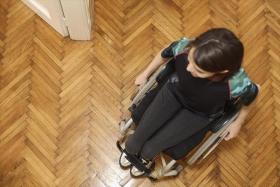'Stomach flu' that landed boy in ICU found to be rare disease
When Ashton Leow had diarrhoea, vomiting and fever on a Thursday in October 2021, a doctor gave the toddler some medicine for stomach flu.
By Sunday morning, however, the usually lively and energetic boy, then aged two years and four months, just wanted to lie on the couch.
His mother, Ms Claire Teo, noticed a reddish-blue spot on his right palm and another on his right leg. Ms Teo’s sister, a general practitioner, advised her to take him to the hospital because the spots looked very unusual.
Ashton’s parents consulted his paediatrician at a private hospital but were not overly worried about the boy, who is their third son.
“Our intention was to get him an IV (intravenous) drip because his lips were dehydrated, and he couldn’t keep anything down,” said his father, Mr Richard Leow, a director at a bank.
But it was not that simple. The team at the hospital found Ashton’s blood pressure to be very low, and his heart rate very high, said Ms Teo. More spots were appearing, including on his face, she said.
An ambulance was arranged to take Ashton to KK Women’s and Children’s Hospital (KKH), which has a paediatric intensive care unit (ICU). He would not leave KKH for 1½ months.
At KKH’s children’s emergency department, the doctors suspected that he had severe sepsis, and sent him to the ICU.
As it was during the Covid-19 pandemic, only one parent could be with the boy. Inside the ICU with the doctors, Ms Teo saw how baffled they were. “We had thought it was just stomach flu. But over the next 24 to 48 hours, all I kept getting was bad news, one after another. It has gone into the brain, into the bone.”
It turned out Ashton had a difficult-to-treat bacterial infection in his blood, skin, bones (osteomyelitis) and the lining of his brain (meningitis). A team from infectious diseases was called in to treat him.
Dr Bianca Chan, a consultant in KKH’s rheumatology and immunology service, said the ICU team suspected an immunodeficiency and referred the boy early for an immunology evaluation.
The initial screening suggested he might have X-linked Agammaglobulinemia (XLA or Bruton’s Agammaglobulinemia), where the body is unable to produce the antibodies to fight infections.
The condition is caused by a rare mutation in a gene that is required for the normal functioning of antibody-producing B-cells in the immune system.
XLA occurs at a frequency of one per 100,000 newborn males, with a global prevalence of around one to nine per 1,000,000, said Dr Chan. She said there are more than 10 XLA patients in Singapore.
Ashton’s diagnosis was confirmed with blood tests, which showed he did not have protective antibodies despite his childhood vaccinations, she said.
A genetic counsellor was roped in to talk to his parents and arrange for genetic testing.

As it is a mutation on the X chromosome, the worry was that Ms Teo was the carrier. Concerned for her older sons, she got tested, but the tests were negative.
“In his case, it was a de novo mutation, meaning that it occurred only in himself during embryo formation and was not inherited from his parents,” said Dr Chan.
The diagnosis was a relief, however hard it was. “At least we knew what we were dealing with,” said Ms Teo, a business development manager in her family’s property business, the Daniel Teo group of companies. “We didn’t even think of what having XLA would mean for the rest of his life at that point.”
Dr Chan said XLA patients are dependent on lifelong regular infusions of donated antibodies. This can be in the form of monthly intravenous immunoglobulin at the hospital or weekly subcutaneous immunoglobulin at home, though the latter is costlier with no subsidy available currently and not suitable for all, she said.
Ashton is on the monthly therapy, which takes a few hours each time. The subsidised bill for the treatment comes up to around $2,000 a month, but it costs less with medical insurance, for Ashton.
Without treatment, XLA patients are at risk of serious invasive bacterial infections of the lungs, brain, bones and other organs. They are also at risk of sinusitis, pneumonia and other similar infections, which can lead to complications over time.

Ashton’s parents decided to share their story to mark Rare Disease Day on Feb 28, which seeks to raise awareness about the impact that little-known conditions have on patients’ lives. Ms Teo is also now a volunteer corporate fund-raiser for Rare Disorders Society (Singapore), or RDSS, a charity set up in 2011.
In Singapore, a rare disease is defined as one that affects fewer than one in 2,000 people. RDSS co-founder Kenneth Mah said about 3,000 to 4,000 people may be living with a rare disease in Singapore, but without a registry to track diagnoses, the actual numbers are not known.
Mr Leow, 41, said they have made adjustments to their lifestyle since Ashton’s diagnosis. The family has been able to travel to Bintan and Perth on holiday, but no longer visits Sentosa’s beaches.
Ms Teo, 43, also works from home whenever Ashton is sick, which is frequently.

In a good month, Ashton, now about 3½ years old, is at pre-school three weeks out of four. In a bad month, he is there half the time, said Mr Leow.
“He’s like a country without an army and his treatment is like the reinforcement from another country, but the soldiers have no loyalty,” he said. “What’s important is that now we know how to react. We will never leave him sick for more than one day... And if it crosses 24 hours and he’s not doing well, we head for KKH.”
Get The New Paper on your phone with the free TNP app. Download from the Apple App Store or Google Play Store now


